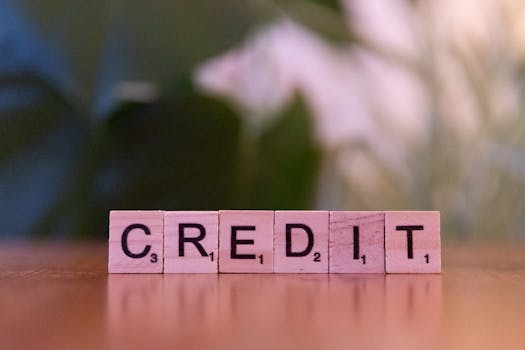Credit cards can feel like both a handy tool and a potential financial trap, depending on how they’re used. Most people have wondered at least once whether having one is truly beneficial or risky. In this guide, we’re exploring the real ups and downs of credit cards with relatable examples along the way.
Millions of Americans rely on credit cards for their daily purchases, emergencies, or even to build their credit history. But the convenience comes with questions about interest, fees, and debt. Understanding both sides helps you take control of your financial story.
Join us as we explore practical scenarios, compare outcomes, and deliver honest pros and cons in plain language. You’ll find analogies, tables, actionable lists, and the clarity needed to navigate credit card options confidently.
Decoding the Attraction of Credit Cards
The allure of credit cards is hard to miss: instant buying power, rewards programs, and the ability to purchase online or in emergencies. These benefits often outweigh the drawbacks, at least initially.
Having a credit card is a bit like keeping an umbrella in your bag: you might not need it every day, but when a financial downpour hits, you’re grateful for the coverage.
- The ability to pay for goods and services even when cash runs low can prevent awkward situations.
- Many cards offer rewards points or cashback, effectively giving back a portion of your spending.
- Emergency expenses become manageable when you don’t have liquid cash available.
- Traveling becomes much smoother; most hotels and car rentals require a valid credit card for security reasons.
- Online shopping is far safer and more accessible with credit protections and chargeback rights.
- Many issuers include insurance for things like cellphone protection or rental cars when you use the card.
While these perks entice thousands to jump on board, it’s crucial to approach credit cards as useful yet powerful financial tools, not bottomless wallets.
The Double-Edged Sword: Convenience vs. Debt
Consider Jessica, who used her credit card for everything from groceries to morning coffee. It was convenient, but over time, her balance quietly grew. Eventually, monthly payments took a big chunk of her income, making her rethink every purchase.
On the flip side, her friend Marcus used his card strictly for emergencies, always paid in full, and enjoyed rewards without ever paying interest. Their contrasting experiences show how usage habits shape the impact of credit cards on our lives.
A third example: Trevor used a 0% intro APR to finance a laptop. He paid it off before the period ended, dodging interest completely. Timing matters—miss a deadline, and you shift from strategic savings to hefty costs quickly.
Choices around spending and repayment dictate whether you benefit or struggle with credit cards. A little mindfulness goes a long way in keeping convenience from morphing into unmanageable debt.
Comparing the Main Benefits Side-by-Side
Before embracing credit, it helps to break down its main advantages. These perks can add real value—if managed wisely—but may vary depending on the card and how you use it.
- Rewards and cashback provide tangible returns. A dollar spent can earn fractions back; some people treat these as discounts or bonuses, especially on big-ticket items.
- Building credit history is one of the fastest ways to qualify for loans or mortgages, provided you make timely payments. A solid score can save thousands in future interest.
- Purchase protection insures you against fraud, defective products, or non-delivery. While debit cards offer some coverage, credit protections are generally stronger and less stressful for the cardholder.
- Travel perks include airport lounge access, no foreign transaction fees, lost luggage insurance, or concierge services. This is where premium cards stand out for frequent travelers.
- Emergency liquidity lets you cover unexpected expenses, spreading payment over months when necessary. It’s like building a temporary “financial bridge,” but use this sparingly to avoid debt spirals.
- Expense tracking simplifies budgeting. Card statements clearly categorize transactions, making it easier to manage spending, spot fraud, or organize receipts for taxes or reimbursements.
- Introductory offers—like 0% APRs or sign-up bonuses—can deliver immediate savings, provided you understand the fine print and plan ahead for when promotions end.
While this list highlights the many benefits, their real value depends on your habits and whether you pay in full each month. Otherwise, interest and fees can quickly erase gains.
Risks, Fees, and Financial Pitfalls Explained
With great convenience comes the potential for substantial risk. Interest rates on credit cards are typically higher than other common financing options, and it’s easy to accumulate debt before noticing the consequences.
If you carry a balance, interest can compound rapidly. For instance, paying only the minimum on a $2,000 balance at 20% APR can trap you in years of payments and excessive interest costs.
| Fee Type | Explanation | Potential Impact |
|---|---|---|
| Annual Fees | Yearly charges just for having the card | Add to cost, unless outweighed by rewards/perks |
| Late Payment Fees | Charged when you miss the due date | Can damage credit score and trigger penalty rates |
| Balance Transfer Fees | Applied when transferring debt to another card | Negates savings from low-interest offers if not managed |
This table captures some common fee types. Each fee, if combined with regular interest, can turn even a modest balance into a costly financial burden unless you remain vigilant and proactive.
Credit Cards as Tools for Building Financial Habits
When managed with care, a credit card becomes a powerful tool for developing positive financial habits. Paying in full every month can boost your credit score while helping you learn discipline and accountability.
Think of credit cards like kitchen knives; they’re extremely useful for preparing meals, but careless handling can lead to cuts. Likewise, responsible usage “sharpens” your money skills, while misuse can leave lasting scars on your finances.
By monitoring your statements closely, you gain awareness of your spending habits. Apps and alerts are helpful for budgeting and for staying under the credit limit, which further improves your credit standing over time.
Credit cards also enable automatic bill pay, reducing the risk of missed payments. Treat the card like a debit card, using it only for things you could cover with cash. This mindset keeps spending within healthy limits while earning rewards.
Hidden Drawbacks and Lesser-Known Considerations
- Store credit cards often come with higher-than-average interest rates.
- A high credit utilization ratio can lower your credit score, even if payments are on time.
- Cash advances may incur both high-interest charges and transaction fees.
- Promotional 0% APR offers can revert to steep interest rates after expiration.
- Some cards require a minimum spend to access rewards, which can prompt overspending.
- Rewards and perks can lose value if you don’t redeem them within deadlines or according to terms.
- Using too many cards at once makes tracking spending more difficult and risks missing payments.
Awareness of these lesser-known factors helps you steer clear of pitfalls. Small oversights, like missing reward deadlines or ignoring minimum payments, can undercut the advantages of owning a credit card.
Being strategic with your card choices and usage habits maximizes the benefits without falling into hidden traps. Knowledge and cautious planning provide the best safeguard against unpleasant surprises.
Balancing Rewards Versus Costs for Different Lifestyles
The best card for a frequent traveler isn’t the same as the best card for someone who pays in cash most of the time. Consider two approaches: Susan uses a travel rewards card for business trips, reaping perks like lounge access and no foreign transaction fees; meanwhile, Larry’s cashback card fits his daily grocery and gas needs better.
People who carry balances typically benefit less from rewards programs, as interest can easily outweigh the gains. Conversely, those with excellent credit who pay in full each month can unlock more benefits than drawbacks.
Imagine using credit cards like choosing appliances: the right one makes life easier, but buying features you’ll never use just wastes money. Align card selection with real spending habits and lifestyle goals, not just advertising hype.
What Happens When Life Throws a Curveball?
Unexpected expenses are a part of life. Credit cards help bridge gaps, but heavy reliance during tough times can quickly build debt. Picture losing your job or facing medical bills—credit cards might offer short-term relief but could create new financial stress if not managed carefully.
If you lose your wallet, a credit card is easier to lock or replace compared to cash, and liability is usually limited. However, missed payments due to rushed or chaotic periods can harm your credit score, impacting future opportunities for loans or rental agreements.
Crisis situations force us to consider “what if” scenarios: Can you afford to repay borrowed funds in the months ahead? Would you qualify for a hardship plan with your issuer, or do you need to focus on building savings instead?
Finding the Sweet Spot: Thoughtful Choices and Final Thoughts
Credit cards offer both meaningful advantages and substantial risks. Used thoughtfully, they can support financial goals, offer security, and deliver helpful rewards without leading to debt.
Nonetheless, missteps—like missed payments or relying on credit cards for wants instead of needs—can result in years of payments, high interest, or damaged credit. Staying conscious of your habits and limits is key.
The right approach blends awareness, planning, and responsible usage. Compare cards and their features, know your own needs, and use credit as a tool rather than a crutch.
Remember, you have the power to control the impact of credit cards on your life. With the proper knowledge and healthy financial routines, you can enjoy the benefits while steering clear of the drawbacks.

